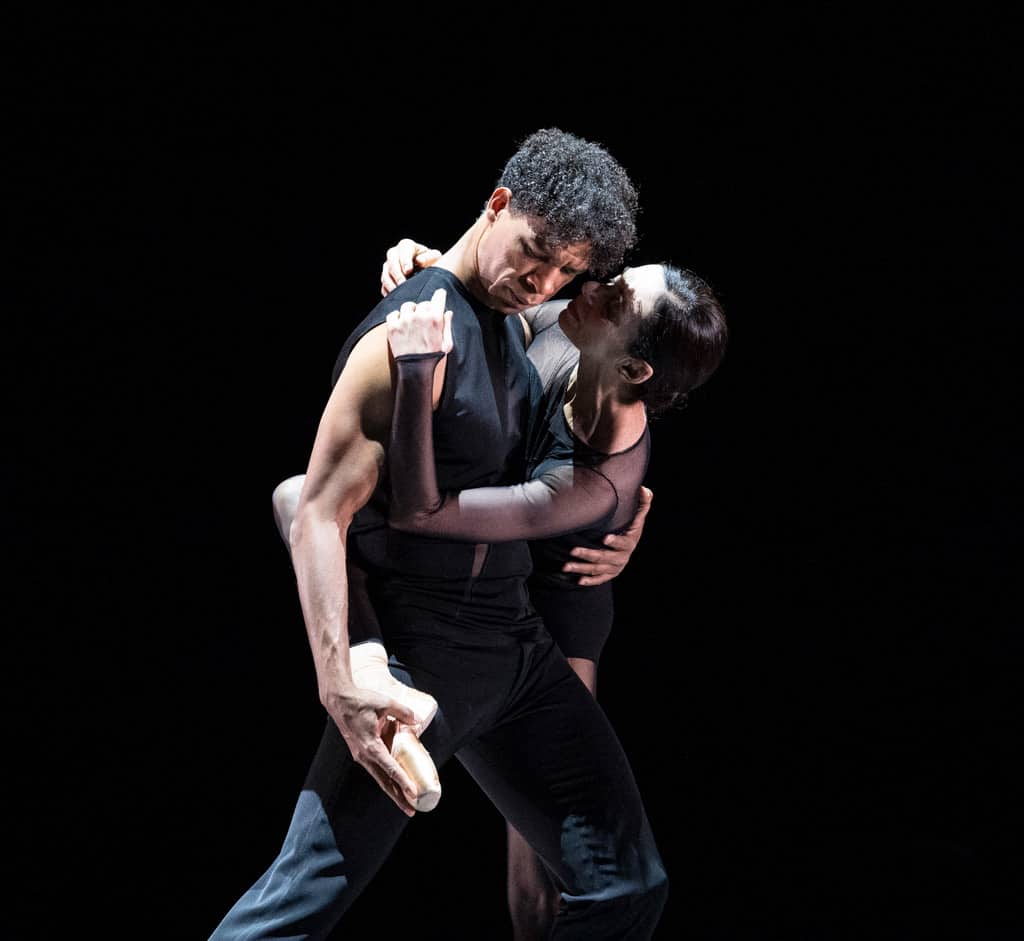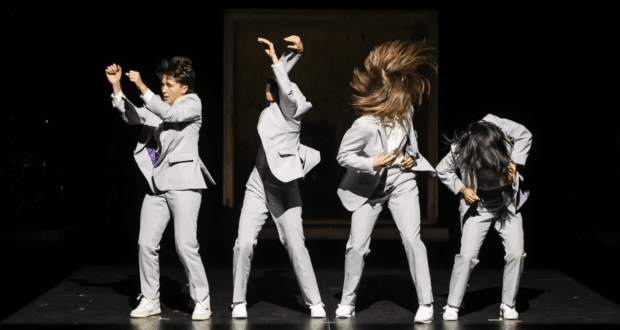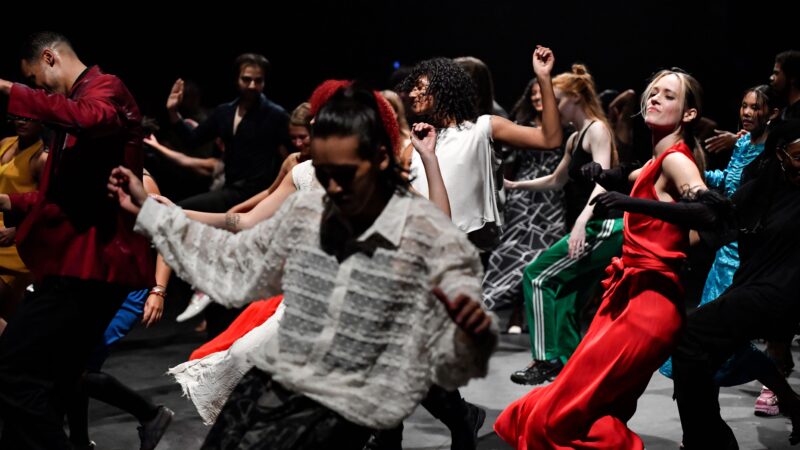Good things come in threes, the Holy Trinity, the Matrix series, the Sugarbabes. A triptych of exquisite dance under Carlos Acosta’s careful directorship explores different facets of humanity and our relationship to space. They all share one quality: distinctiveness.
Kicking things off we have a love letter to Birmingham. A multimedia dive into the city’s industrial past and the contributions immigration has made. The poet laureate Casey Bailey’s flowing accent and lyrical prose mix with interviews with real Brummies. The repeated “I have traded” in both senses of the word is a clever cornerstone.
Miguel Altunaga has denim-clad dancers vaulting through a concrete and iron piped cityscape. The athletic, passionate movements of the dancer smash against the hard lines of Giulia Scrimieri’s set.Michael Lee-Woolley’s harsh splinters and circles of light divide the action nicely. The solos (to monologues) are the most moving, as the dancer’s bodies morph into the pain, confusion, and hope in the people’s voices.Mathias Coppens mixes the sound of live anvils and an international selection of percussion with Royal Ballet Sinfonia classical firepower. A cacophonous effect of a space in flux. Staging a metropolis is hard, and one so varied as The City of a Thousand Trades (also the title) is even more so but as a collective, the fractured offering is stirring.
Imminent is a softer, yet equally challenging work. Paul Englishby’s flute heavy score chops and changes like a darting fish.April Dalton’s beautiful archaic set, a wall of what looks like cracked desert mud, or papyrus rising at the back of the stage. Nubile dancers in minimal nude costumes cavort like nymphs, spinning in tight circles and exploding out in a more classical offering. Daniela Cardim’s choreography is on the surface beautiful and delicate, but as a door opens in the wall of paper, a sinister tone is sewed in the massed dancers. An undercurrent of uncertainty infects, hands flay, legs splay, and the extended bodies spin in more painful-looking configurations under a red light. As the dancers decide about the future, hesitating on the threshold of the new world images of humanity’s choice are conjured. The tremulous movements, slight bodies shivering in the glowing entrance is an arresting image.
Save the best for last perhaps? Or maybe some reversal of the age before beauty saying?Chacona brings together some formidable talents. Acosta himself, proving his characteristic style is alive and very much kicking. Paired with the famous Alessandra Ferri back from retirement. Goyo Montero choreographs a piece as varied as it is stimulating. The BRB dancer flank the couple in a series of Paux de Deux, looking a little like the chorus from Chicago’s Cell Block Tango, watching the couple’s electric intimacy. Having worked together various times as younger dancers this trust is rite large in the early sections. What follows is a humorous and joyful ensemble piece focusing on balance and formation. Like the Chinese dance of a thousand (a reoccurring number) hands, the use of the body as shape-creating vehicles proves very effective. A comedic twisting of the classic give/receive rulebook pokes fun at the genre’s traditional gender roles. J.S Bach’s Chorale prelude No.3, Chaconne from Partita no.2 in D minor, are performed by an onstage piano, violin, and classical guitar. Each piece informed by the tonality of the instrument. The bodies fall, stabilise, spring, and leap in a mathematical choreography that defies expectations.
Costa and Ferri may only be onstage for a fraction of time, but their shadows and influence stretch far. Acosta’s eye and vision is felt throughout, with each piece leaping enthusiastically out of the box. Ferri underlines the importance of maturity and (sometimes) relegated voices in the world of dance which provides an interesting commonality throughout. The patchwork created, with a range of influences shows once again that only together can we create anything of real and shining value. Move over London, Britain seconds city’s coming through!



